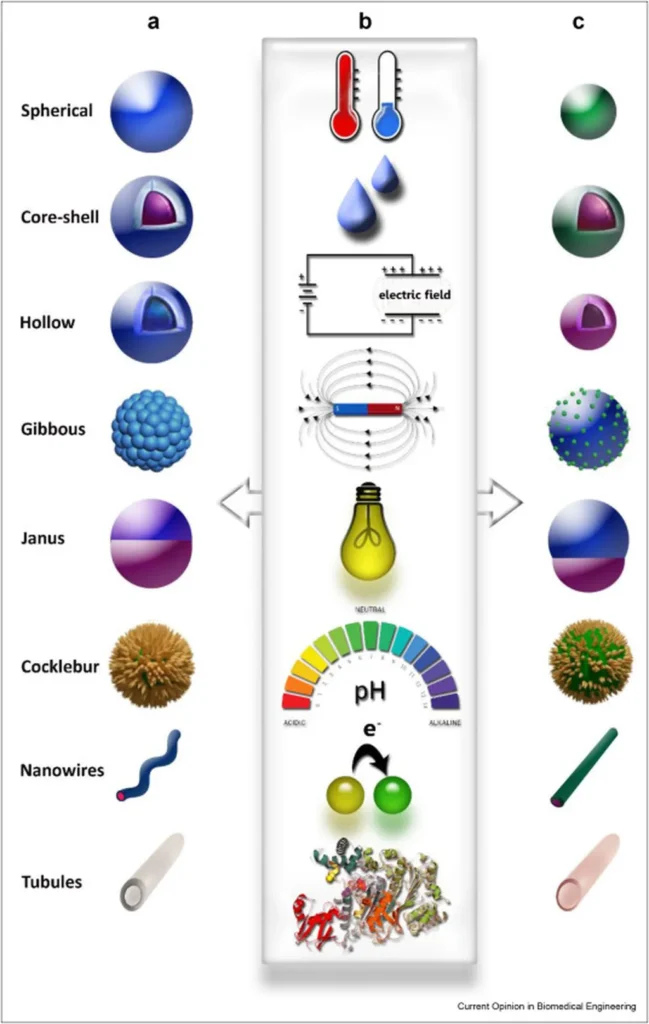In the ever-evolving landscape of bioengineering, a quiet revolution is underway, one that promises to reshape the way we approach medical treatments and regenerative therapies. At the heart of this transformation are smart biomaterials, a cutting-edge class of materials that are not merely inert but dynamically responsive to their environment. These materials are poised to redefine the boundaries of tissue engineering and regenerative medicine, offering unprecedented precision and adaptability in clinical applications.
Dr. Sutanu Dutta, a leading researcher from the Department of Biotechnology at Manipal School of Life Sciences, Manipal Academy of Higher Education, India, has been at the forefront of this exciting field. In a recent study published in the International Journal of Smart and Nano Materials (which translates to the International Journal of Smart and Nano Materials), Dr. Dutta and his team delve into the remarkable advancements in smart biomaterials, highlighting their potential to revolutionize medical treatments.
“Smart biomaterials represent a significant leap from the early days of inert implants,” Dr. Dutta explains. “These materials are designed to interact with their environment, adapting to internal cues like pH, temperature, and enzymatic activity. This dynamic behavior opens up a world of possibilities for targeted drug delivery, self-healing implants, and tissue scaffolds that evolve in real time.”
The journey of biomaterials has been a remarkable one. Early generations were focused solely on structural support and compatibility. However, the introduction of bioactive and biodegradable systems enabled better integration with host tissues. Third-generation biomaterials brought bioinstructive capabilities, influencing cellular responses and supporting regeneration. Today, fourth-generation materials exhibit dynamic, stimuli-responsive behavior, adapting to internal cues and enabling applications that were once thought impossible.
One of the most compelling aspects of smart biomaterials is their potential for personalized medicine. Emerging technologies such as 4D bioprinting allow the creation of living, shape-morphing constructs that evolve over time. Meanwhile, artificial intelligence accelerates biomaterial design through predictive modeling, optimizing compositions, and enabling patient-specific solutions. These tools position smart biomaterials at the forefront of personalized, adaptive, and regenerative medicine.
The commercial implications of this research are vast. In the energy sector, for instance, smart biomaterials could lead to the development of more efficient and sustainable energy solutions. Imagine bioengineered materials that can adapt to changing environmental conditions, optimizing energy production and storage. The possibilities are endless, and the potential for innovation is immense.
As Dr. Dutta notes, “The integration of advanced fabrication and computational tools is shaping the future of smart biomaterials. These materials are not just about replacing or repairing tissues; they are about enhancing and regenerating them, offering multifunctionality and precision in clinical contexts.”
In conclusion, the research led by Dr. Sutanu Dutta and his team represents a significant step forward in the field of bioengineering. The development of smart biomaterials holds the promise of transforming medical treatments and regenerative therapies, offering unprecedented precision and adaptability. As we continue to explore the potential of these materials, we stand on the brink of a new era in medicine, one that is personalized, adaptive, and regenerative. The future of bioengineering is here, and it is smarter than ever before.

